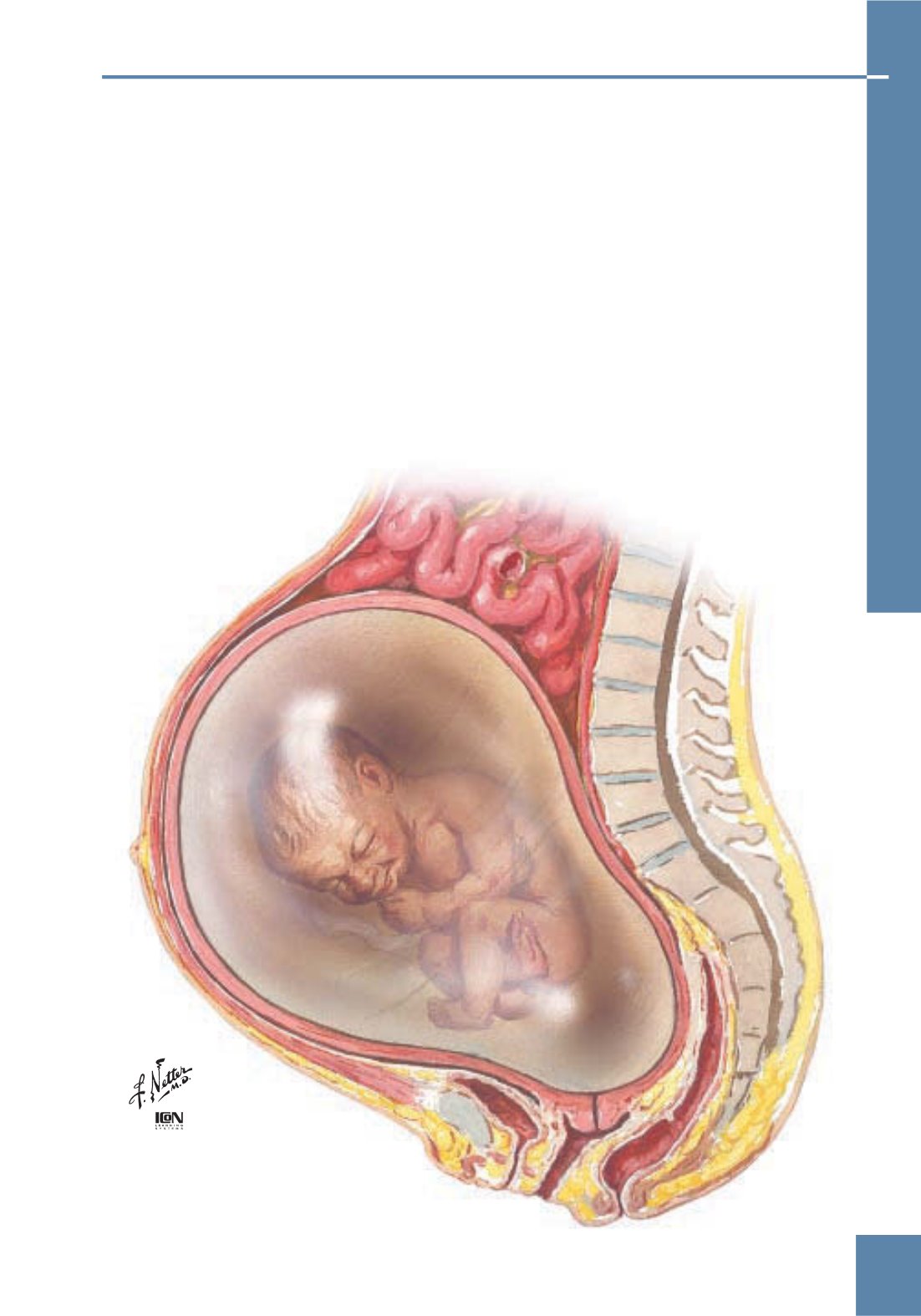

213
Polihidramnios
PATOLOGÍA OBSTÉTRICA
Polyhydramnios
©
Posibles complicaciones:
Amenaza de parto pretér-
mino y parto pretérmino (40%), desprendimien-
to precoz de placenta, compromiso pulmonar
materno, prolapso del cordón umbilical.
Resultados esperados:
Los aumentos de líquido am-
niótico leves o moderados no se asocian a un
riesgo significativo. Con frecuencia el polihi-
dramnios grave se asocia a alteraciones fetales
importantes. La mortalidad perinatal es de
hasta el 25-30% en algunos estudios. En gene-
ral, cuanto más grave sea el polihidramnios,
mayor es el riesgo fetal.
MISCELÁNEA
Códigos CIE-9-MC:
657 (Afecta al feto), 761.3.
©
Polihi
i
BIBLIOGRAFÍA
Carlson DE, Platt LD, Medearis AL, Hornestein J.
Quantifiable polyhydramnios: diagnosis and mana-
gement.
Obstet Gynecol
1990;75:989.
Damato N, Filly RA, Goldstein RB, Callen PW, Gold-
berg J, Golbus M. Frequency of fetal anomalies in
sonographically detected polyhydramnios.
J Ultra-
sound Med
1993;12:11.
Hallak M, Kirshon B, Smith EO, Cotton DB. Amniotic
fluid index. Gestational age-specific values for nor-
mal human pregnancy.
J Reprod Med
1993;38:853.
Kramer WB, Van den Veyver IB, Kirshorn B. Treatment
of polyhydramnios with indomethacin.
Clin Perina-
tol
1994;21:615.
Many A, Hill LM, Lazebnik N, Martin JG. The associa-
tion between polyhydramnios and preterm delivery.
Obstet Gynecol
1995;86:389.
Queenan JT. Polyhydramnios and oligohydramnios.
Contemp Ob/Gyn
1991;36:60.









